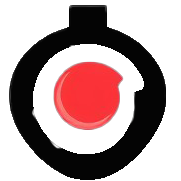Looking at the most successful AI transformations of the past decade, we have observed a common thread: what we call the 70/20/10 rule. Seventy percent of the effort involves people: processes, ways of working, incentives, and performance targets. Twenty percent entails getting the data right. The remaining ten percent is about the technology foundation. This empirical finding comes from reviewing the level of resources we and our clients have deployed across hundreds of digital transformations. In fact, it holds equally true for digital transformations dedicated to personalization. This distribution doesn’t mean that data and technology are easy, but it underscores how much time and resources the change management needed for personalization requires. That 70 percent piece is the focus of this thought piece.
Many organizations, however, get this formula backwards: they see transformation, including personalization, as a chiefly technological issue. Or else they understand the implications on people and process but find them too daunting to address. Yet we’ve seen time and again how this approach causes so many transformations to falter. Why?
This article is part of Branding Strategy Insider’s newsletter. You can sign up here to get thought pieces like this sent to your inbox.
A lack of agile ways of working across functional teams. Although agile has become a corporate mantra, in our experience very few big companies do it well, especially outside of their IT teams. Without the proper tools and methods to facilitate rapid experimentation and learning, companies end up giving customers inconsistent and static experiences across channels. Implementing agile approaches is the biggest change necessary for successful personalization, and the hardest one to get right. Many companies thus shy away from taking this major step first.
Processes that are slow and not scalable. When processes are not tightly coordinated across silos, collaboration among teams involves long lead times and dozens of handoffs. Cycle times for personalized campaigns often run between six and twelve weeks, and learning slows down. Nimble teams can cut down the number of handoffs and automate key parts of the work to reduce the cycle time to three days or less.
Lack of automated measurement and embedded analytics. In many organizations, the impact of personalization is not measured consistently, and measurement is delayed. When it takes anywhere from two to four weeks to analyze an email campaign’s performance, your target customers may end up receiving the same email you’ve just tested, because you’ve had no chance to incorporate the findings. The same applies to monthly coupons sent to price-sensitive customers; sending out July coupons without knowing how May’s performed can have considerable revenue impact. Furthermore, data is not accessible to decision makers who need it most and analytics resources are limited—meaning even longer delays in drawing insights.
Solving for the 70/20/10 Rule at a Major Retailer
So what can companies do to overcome these challenges and achieve that 70/20/10 balance? One client, a large global retailer, took a phased approach, starting with the “70” part of the formula.
First, the company piloted new agile ways of working.
The company started by setting up a Personalization Lab. This is an approach to accelerating personalization, where an agile, cross-functional team (“pod”) re-engineers core personalization-related processes for speed and scalability and tests the value of quick-win use cases by taking a group of customers (a control group) offline. Initially, the team piloted three targeted use cases across two channels. For each use case, the team was tasked with working toward a specific, measurable six-month goal, such as testing and scaling personalized product recommendations on the website or designing new, multistep personalized offers in the app. Within a year, the same working model was scaled across the five core customer strategies: increasing new customer acquisition, expanding digital engagement, growing loyalty, members increasing the share of Gen Z customers, and growing multicategory cross-sell.
Figure 6-2 shows what a typical agile pod looks like: representatives spanning a wide range of cross-functional areas, including marketing, analytics, IT, creative, data scientists and engineers. All of them are “doers” who could quickly execute their ideas on their own (or in some cases, like in technology, could readily tap broader organizational resources).
Next, the personalization team identified ways to streamline the process.
The Personalization Lab team members mapped how personalized experiences were traditionally launched. (See figure 6-3). They identified thirteen handoffs that could be reduced to just three and nineteen steps that could be whittled down to ten, with automation reducing the resources needed by two-thirds. The traditional twelve-week campaign development process was reduced to five days. (See figure 6-4).


Importantly, the Personalization Lab allowed the agile pods to put the streamlined process into action, demonstrate that it worked, and refine it. When the time came to scale this process across the organization, there was a proven blueprint to work from, making it much easier to achieve alignment for the many changes needed across the functional teams. Senior leaders, seeing the substantial time and resource savings, quickly rallied behind the changes.
Finally, the personalization team set specific, measurable goals.
The team decided on several specific goals, then set up automated measurement dashboards that provided real-time customer engagement metrics for all experiences launched. Each personalized experience was designed for experimentation, so that, using a test versus control methodology, the team could measure the resulting net incremental sales. Importantly, these results were automatically loaded into the dashboards as soon as a test was concluded.
The team adopted a “1% per week” improvement mantra for all the KPIs (meaning at least that level of impact had to be achieved each week). Its strategy of pursuing rapid, incremental improvements led to dramatic gains, with 100 percent gains in customer engagement and 40 percent increases in incremental sales lift achieved in six months. Among the things the team tested were:
- What are the most important triggers to act on?
- Which channel is most effective to use?
- When do we reach out to a customer?
- What’s the right message to send?
- What incentive should we offer?
Over time, as more experiments were run and more data gathered, AI played an ever-increasing role. Machine learning helped in designing and optimizing multivariate tests and scaling the results to the broader customer population. The net result was a “bank” of value that was used to fund the next steps in the personalization effort, including investments in technology and automation.
Mark Abraham is a managing director and senior partner at BCG, founder of the firm’s Personalization business, and co-author of Personalized: Customer Strategy in the Age of AI. David C. Edelman is an executive advisor and senior lecturer at Harvard Business School, former CMO of Aetna, and co-author of Personalized: Customer Strategy in the Age of AI.
Reprinted by permission of Harvard Business Review Press. Excerpted from PERSONALIZED: Customer Strategy in the Age of AI by Mark F. Abraham and David C. Edelman. Copyright 2024 The Boston Consulting Group, Inc. All rights reserved.
At The Blake Project, we help clients worldwide, in all stages of development, define or redefine and articulate what makes them competitive at critical moments of change. Please email us to learn how we can help you compete differently.
Branding Strategy Insider is a service of The Blake Project: A strategic brand consultancy specializing in Brand Research, Brand Strategy, Brand Licensing and Brand Education
FREE Publications And Resources For Marketers
Post Views: 19










